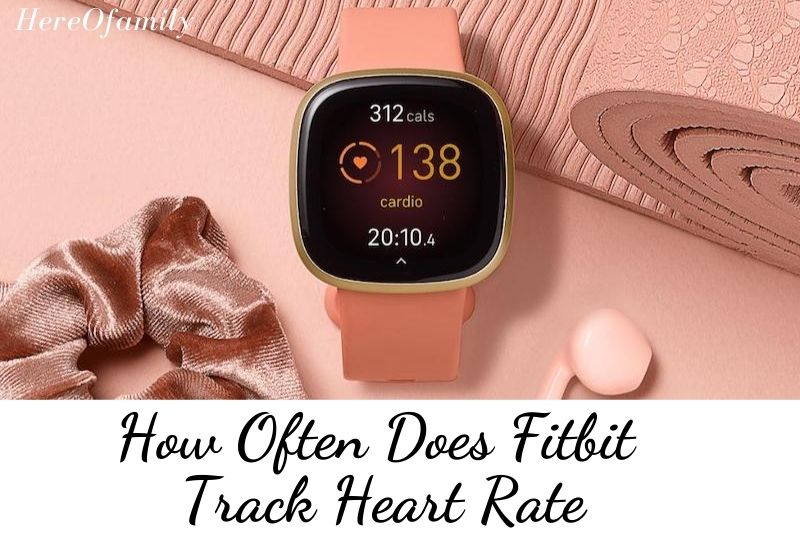- No Voice
The Fitbit is a popular fitness tracker that is worn on the wrist. It tracks heart rate, steps taken, and calories burned. It also has a feature that allows it to track sleep. The Fitbit is not a medical device, but it is accurate enough to give users an idea of their fitness level and activity.
But How often does Fitbit track heart rate? Let’s explore with HereOfamily!
Contents
15 Ways Fitbit Devices Use Your Heart Rate Data
Fitbit can better establish facts about your body and provide superior insights by tracking your heart rate. Fitbit’s heart rate sensor is used for:
- The rate in real-time, 24 hours a day, 7 days a week
- The rate during exercise and automatic workout detection
- Heart rate at rest
- Heart rate average
- Variability at a heart rate (Health Metrics Dashboard)
- Information on calorie consumption
- Sleep Stages, it is measured during sleeping.
- VO2 Max as measured by the Cardio Fitness Score
- Breathing using the Relax app
- Minutes in the Active Zone
- Maps of Workout Intensity
- Notifications of a high or low heart rate
- Detecting indications of atrial fibrillation (using Fitbit Sense/Fitbit Charge 5 and an ECG)
- a score for stress management
- A score of Daily Readiness (Fitbit Premium only)
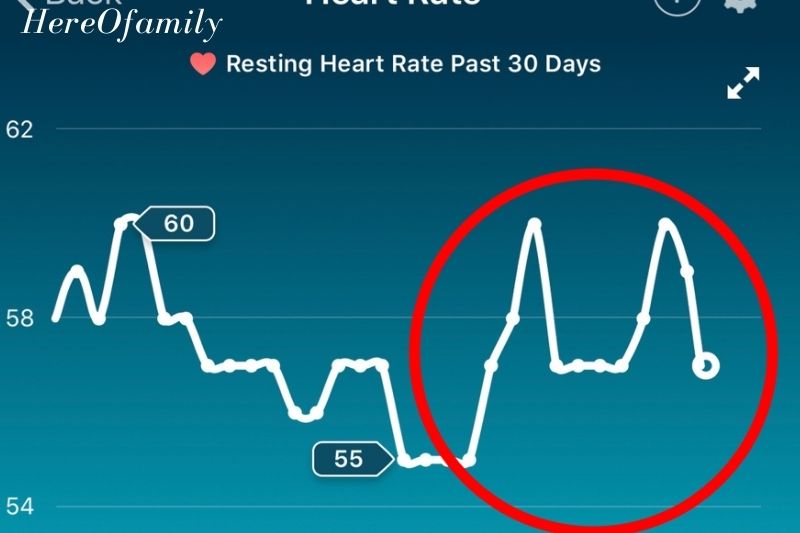
How Does Fitbit Detect My Heart Rate?
Capillaries expand and contract in response to variations in blood volume when your heartbeats. The optical heart-rate sensor in your Fitbit gadget flashes its green LEDs hundreds of times per second to detect volume changes in the capillaries above your wrist and utilizes light-sensitive photodiodes to calculate the rate of heart .
The instrument then estimates the number of times your heart beats each minute (BPM). The optical heart-rate sensor detects a range of 30-220 BPM.
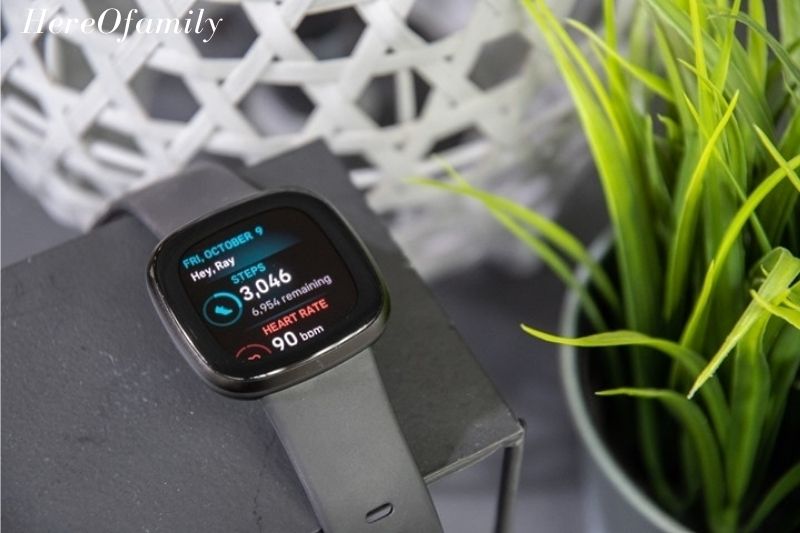
Finding my pulse at my wrist or neck is significantly more complicated with Fitbit. My rate and other fascinating information, such as my rate zone and the duration I’ve been in it, are displayed on the Fitbit screen.
I usually bounce around in different zones during an aerobics class. I’m more inclined to stay in one zone for a more extended period during a dog walk.
Understanding Heart Rate Zones
Fitbit categorizes rate zones of the heart into peak, cardio, and fat burn. Your maximum rate determines which zones you should be in.
- The Peak zone is where the most intensive part of your workout occurs when it is between 80 and 100 percent of your maximum. I rarely enter this zone, and it lasts no more than 10 minutes when I do. In the second half of a cycling class, I usually hit this zone when I’m putting in a lot of effort in a sprint challenge.
- When you’re training for a big event, the cardio zone, 70 to 84 percent of your maximum rate, is where the real work is done. You should be able to maintain it for about 30 minutes. When I ride my bike to work, I stay in this zone. Minutes of consistent workout, not too fast, not too slow.
- Moderate workouts in the fat-burn zone use 50 to 69 percent of your maximal rate of heart . During a low-impact flow yoga practice, I find myself in this zone.
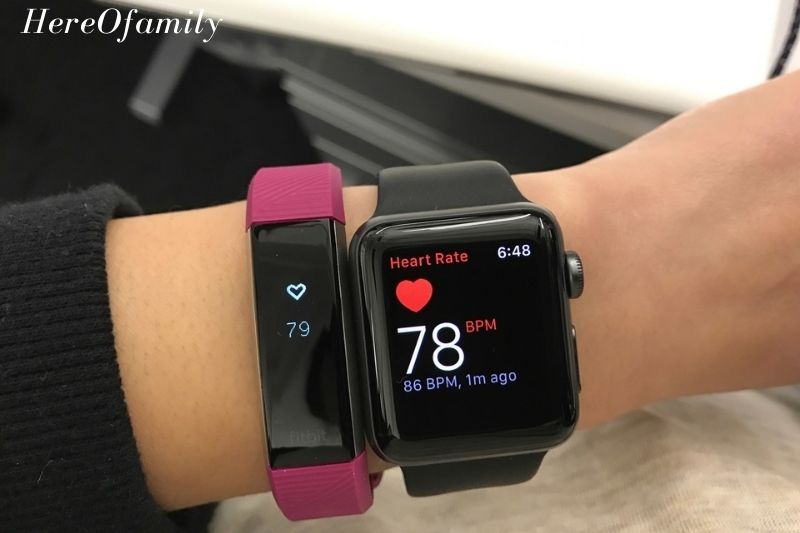
You can build a custom zone on Fitbit to track a different rate zone. Turn on Custom Zone in your account profile’s HR Zones setting. You can set your higher and lower limitations.
Maybe this guide can help: How To Update Fitbit App
What Is Resting Heart Rate?
Your resting heart rate is another crucial figure to know. This can be measured after 30 minutes of sitting quietly or when you first wake up in the morning.
When you are motionless and well-rested, your resting rate is the number of times your heart beats per minute. This statistic can be a good indicator of your overall cardiovascular health and fitness level.
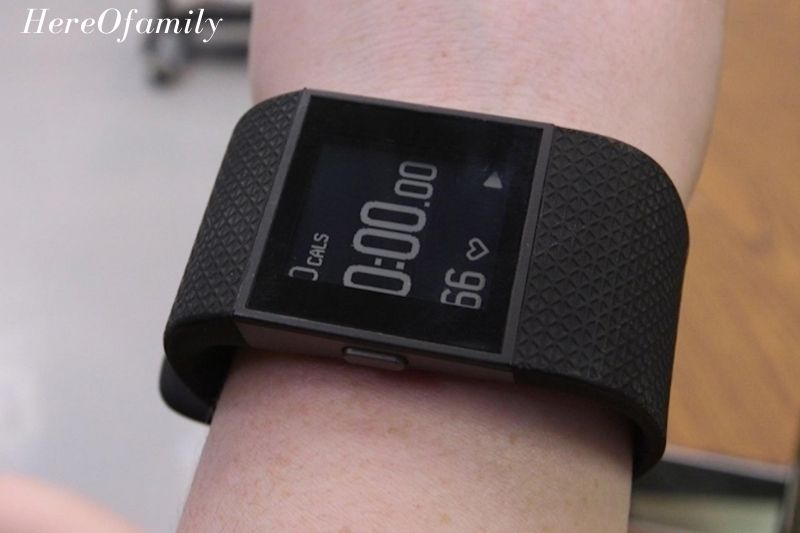
Adults’ resting heart rates typically range from 60 to 100 beats per minute. The resting rate of active people is usually lower. Significant fluctuations in this number may indicate a health problem that a doctor should handle.
Fitbit calculates it using data collected while awake and asleep. Wear your device to sleep for the most outstanding results.
In this helpful article, you can learn more about connecting Fitbit to Iphone.
Fitbit PurePulse Technology
Since I first learned about heart rate monitoring, technology has advanced dramatically. Fitbit’s PurePulse technology employs photoplethysmography to detect rate, which can help you meet your weight-loss goals, exercise more effectively, and better manage stress. This is a basic rundown of how the technology works.
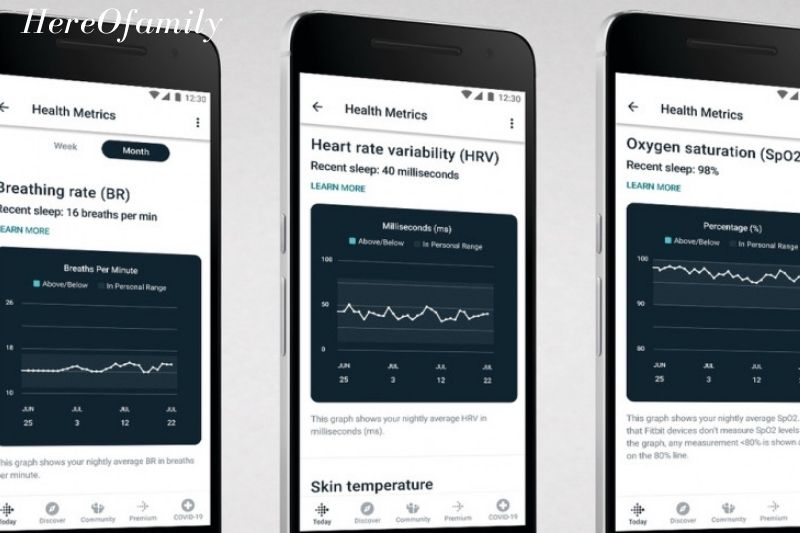
Monitoring it and comprehending the various zones is critical to getting the most out of your Fitbit and achieving your health objectives.
Finally, give the Fitbit Relax App a shot. The program, which is only available on select Fitbit devices, allows you to create personalized deep breathing sessions (ranging from 2- to 5-minutes in length) to help you find moments of peace throughout your day. According to Fitbit research, 67% of those who use the Fitbit Relax App see a reduction in heart rate.
Ways Continuous Heart Rate Tracking Gets You Closer to Your Goals
Goal: Weight Loss
Try This Heart-Rate Powered Feature: Calories burned
What it does for you: Anyone who wishes to lose weight understands the importance of a calorie deficit: Your body needs to expend more calories than it consumes.
It’s pretty simple to figure out how much you eat (especially if you’re a food recorder), but how can you determine how many calories you burn? That’s a little more challenging unless you have access to continuous heart rate monitoring because the body burns more calories at more excellent heart rates.
Fitbit uses your basal metabolic rate (the rate at which your body consumes calories at rest), activity recorded by your tracker, and any actions you manually log to estimate your calories burned. This information, when combined, allows your gadget to predict your daily calorie burn better.
Goal: Efficient Workouts
Try This Heart-Rate Powered Feature: Heart rate zones
How it works: As you exercise, the rate rises and falls, passing through several zones. It first enters a fat-burning zone, then a more intensive cardio zone, and finally, a peak zone, when you’re pushing yourself to the limit.
Knowing which zone you’re in during your workout will help you work out at the proper intensity for your individual goals. Fitbit devices with PurePulse display your real-time and heart rate zones during exercise, but you can also get a rate-based workout report on the Fitbit app afterward.
![]()
Goal: Heart Health
Try This Heart-Rate Powered Feature: Resting heart rate
How it works: Many monitors are only worn while exercising. While that’s useful (see above! ), it’s also helpful to keep track of your resting rate (your pulse at rest). If you’re active and don’t use a beta-blocker, a low average resting heart rate indicates that you’re in good shape and that your heart is working efficiently.
Many Fitbit devices display your resting rate on your wrist, but the Fitbit app allows you to examine it patterns week by week and month by month. By tracking this statistic over time, you’ll be able to determine if all of your hard work at the gym affects your overall heart health.
Goal: Overall Fitness
Try This Heart-Rate Powered Feature: Cardio fitness score
How it works: Determining how fit you are and if your fitness level is where it should be can be difficult. Fitbit can estimate your VO2 max, a measure of fitness based on how well your body uses oxygen during strenuous activity if you use a Fitbit gadget with continuous heart rate and paired GPS or GPS functionality. This is referred to as your Cardio Fitness Score in the app.
Fitbit has two methods for calculating your Cardio Fitness Score. The default technique calculates your Cardio Fitness Score based on your resting heart rate, age, gender, weight, and other personal data and displays it as a range (i.e., 42-46). Use the exercise app to track a 10-minute (or longer) run on a flat route with GPS to receive a more precise cardio fitness estimate.
Fitbit will calculate your Cardio Fitness Level after determining your Cardio Fitness Score, which will place your score into one of five categories Poor, Fair, Average, Good, Very Good, or Excellent, to show how your aerobic fitness compares to others of the same age and gender.
Goal: Stress Management
Try This Heart-Rate Powered Feature: Relax
It does for you: When you’re stressed, you know how your heart can race. Your PurePulse-enabled device will take you through a two- or five-minute deep-breathing session based on your current rate using the Relax app.
According to Fitbit data, 67% of people who use Relax see a reduction in heart rate. According to independent research, deep breathing for 30 seconds can also help lower blood pressure and pulse rate.
Goal: Better Sleep
Try This Heart-Rate Powered Feature: Sleep Stages
How it works: Your heart beats at different speeds while you go through the several stages of sleep at night—light, deep, and REM. Fitbit uses this information, along with how much you move, to estimate how long you spent in each sleep cycle and how restless you were and how much time you spent sleeping overall.
Have you noticed that you aren’t feeling well-rested? Examine your data to determine whether there’s a link between the amount of deep sleep you received and when you exercised or how much wine you drank with supper.
FAQs
How often does Fitbit check your heart rate?
Every 5 seconds or so, the Fitbit takes a picture. The notorious 200-beat-per-minute peak may be seen.
Is it possible for Fitbit to give a fake heart rate?
According to comparative results from rest and exercise, the Fitbit devices underestimated rates by up to 20 beats per minute during more intense activities, including a jump rope, treadmills, outdoor jogging, and stair climbing.
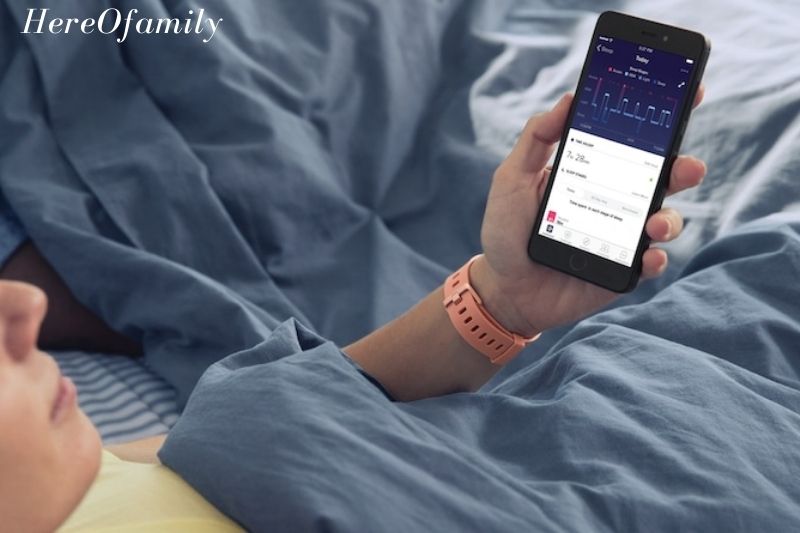
Fitbit, why is my resting heart rate rising?
If you see a rise in your resting heart rate when exercising hard and resting lightly, your body may be signaling that you need to slow down. Your body will be able to mend and adapt if you give it the rest it requires, and you will be able to bounce back stronger than before.
Is Fitbit able to track your heart rate over time?
Swipe up from the clock face on your device to check your current resting rate of the heart. Tap the tile in the Fitbit app to see your resting heart rate statistics for the last 30 days.
Video
Conclusion
In conclusion, the Fitbit is a good fitness tracker that allows you to monitor heart rate and activity levels while using the device. This can help track overall health and encourage the consumer to a healthier lifestyle.
Be healthy, be happy, and do what makes you feel good!
